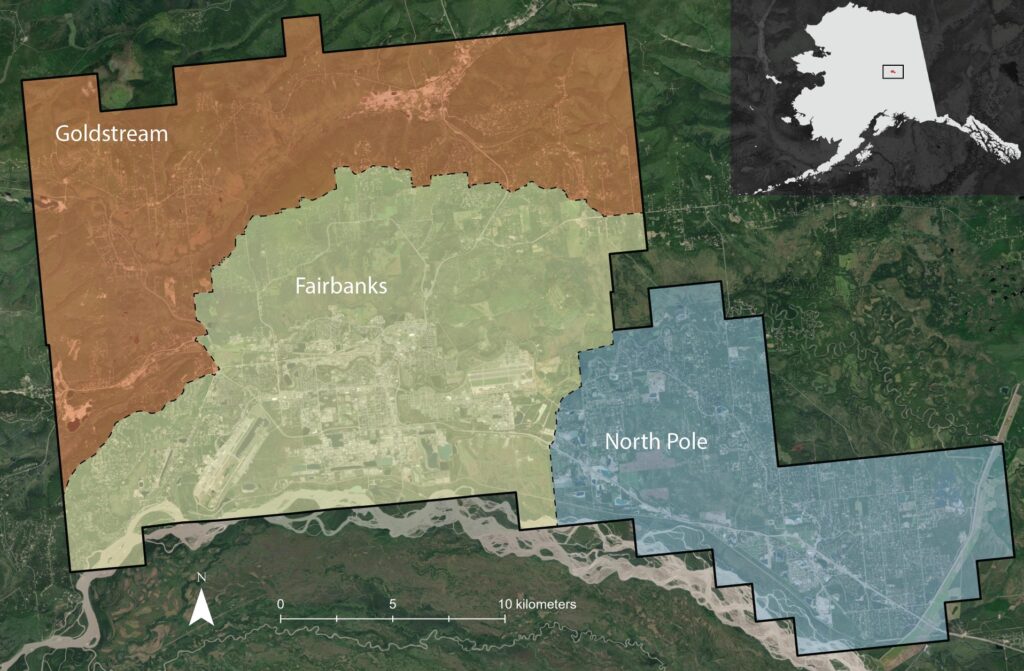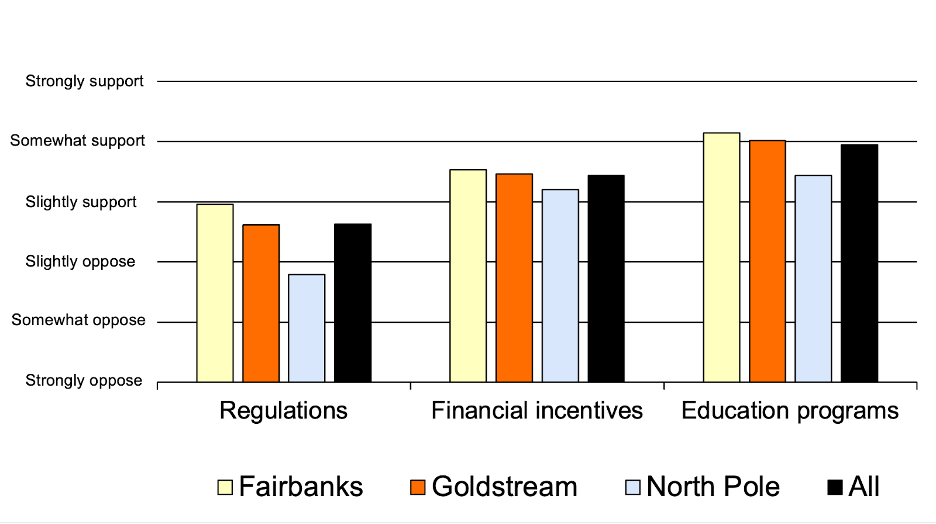By Nathan Kettle
Fairbanks, North Pole, and surrounding areas frequently experience unhealthy levels of particulate matter in winter air. Our community has been working on addressing the linked issues of winter air pollution, affordable energy and wood burning for over a decade.
But how exactly do people in North Pole and Fairbanks feel about these issues? What are community preferences in developing solutions? Our team carried out a large-scale survey to find out. The outcomes can help the community plan and respond to potential risks associated with different kinds of policies and actions.
I worked with a team of researchers at the University of Alaska Fairbanks to find out how residents of Fairbanks and North Pole think about air pollution and wood burning. We mailed our survey to 3,000 people across the Fairbanks North Star Borough. Below are six key findings that we learned from 442 completed surveys.

Key finding No. 1: Our community has concerns about economic impacts of winter air pollution. Sixty-eight percent were at least moderately concerned about potential negative economic impacts of programs designed to reduce wood smoke pollution. This includes concerns about reduced property values from wood stove restrictions, increased energy costs of using non-wood sources of heat, disproportionate impacts on low-income households and loss of local jobs. At the same time, 49% of respondents were at least moderately concerned about economic impacts of not addressing air pollution. These concerns included increased medical costs, lost wages and losing federal highway transportation funds and local jobs.
Key finding No. 2: Our community has some concerns about potential health risks of winter air pollution from wood smoke. Forty-nine percent were at least somewhat concerned about health risks from air pollution, such as risks to their immediate and long-term health, the health of their family and the health of vulnerable populations.
Key finding No. 3: Our community has greater support for education programs and financial incentives to address wood smoke pollution than it does for regulations. Education programs include how to properly use wood stoves, how to store and dry firewood, information on current regulations and financial incentives available and the public health risks of poor air quality. Regulations include wood burning bans, restrictions on the installation of wood burning stoves in new houses, stricter emission standards for wood burning stoves, requiring sellers to provide the moisture content of wood and banning outdoor wood-fired boilers and stoves.
Key finding No. 4: Concerns and preferences for addressing winter air quality vary across the borough non-attainment area. For example, support for regulatory, financial incentive and education programs to address winter air pollution are higher in Fairbanks compared to North Pole and Goldstream. Similarly, residents of North Pole had greater concern about the potential economic impacts of programs designed to reduce wood smoke compared to Fairbanks and Goldstream.
Key finding No. 5: Concerns about the potential economic impacts of not addressing wood smoke and air pollution are related to how much people support policies to address winter air pollution. The more people were concerned about the economic risks of not taking action to address wood smoke pollution, the greater support they had for regulations, financial incentives and education programs.
This survey is the largest work to date that addresses public opinions about wood burning and winter air quality in Fairbanks and North Pole. It illustrates both similarities and differences in how a wide variety of community members think we should address these concerns, which can support public dialogue and inform air quality policy.
I’d like to thank the community members who participated in this project for sharing their time and insights. Your responses are important in understanding how we all can plan for and respond to issues relating to wood burning and winter air quality in our community. Funding for this research was provided by the National Science Foundation. For more information about this project and findings, please visit fairair.community.uaf.edu.

—
Nathan Kettle is a geographer and research associate professor for the International Arctic Research Center at the University of Alaska Fairbanks. He has lived in Fairbanks for 10 years. His email address is nkettle@alaska.edu.


